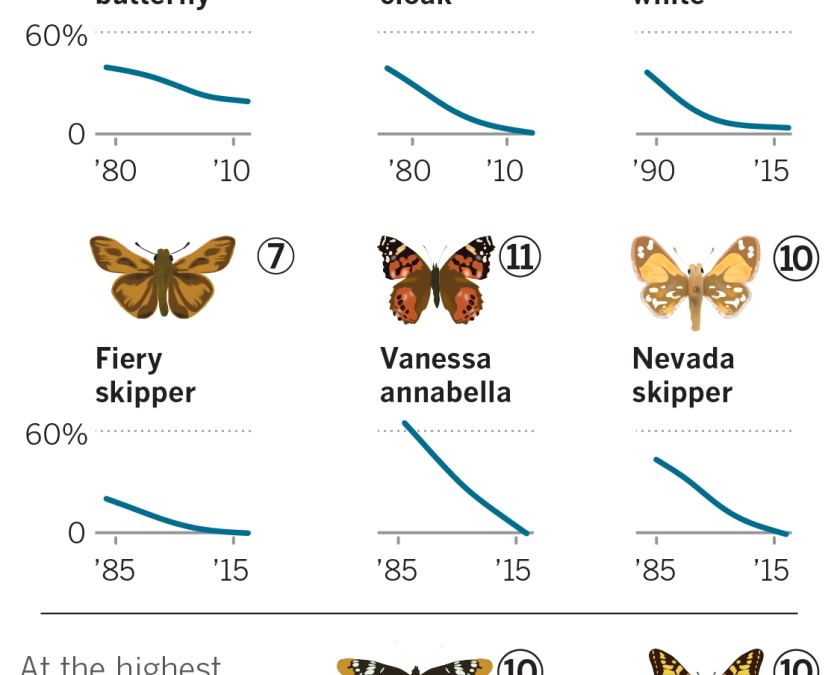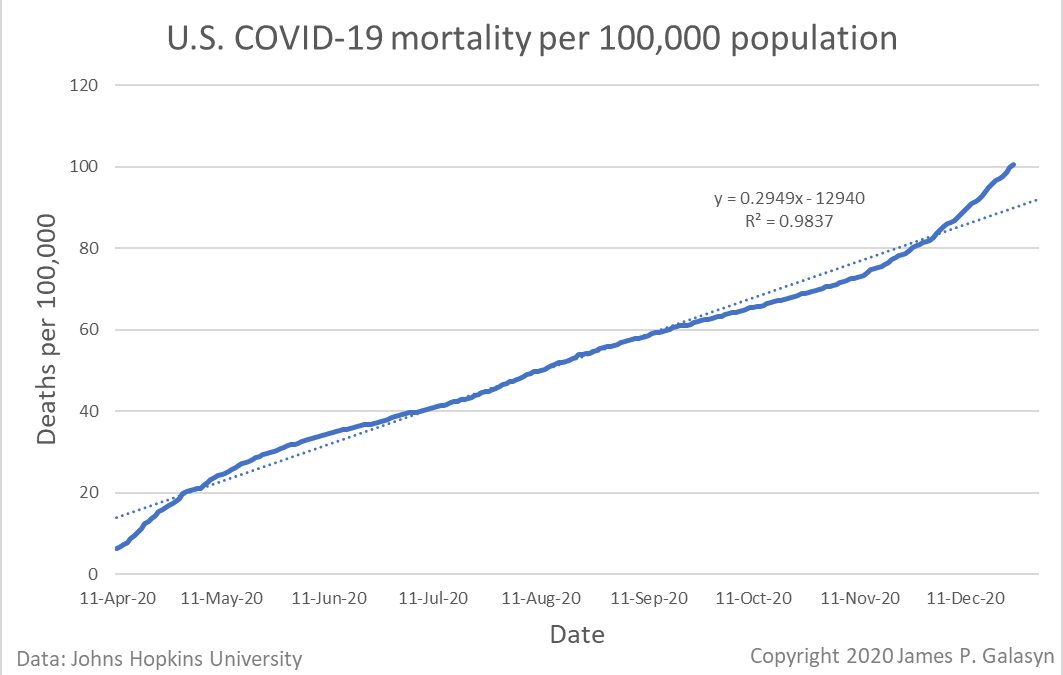U.S. life expectancy falls, driven by suicides and drug overdoses – First three-year period of decline since World War I
By Peter Sullivan
29 November 2018
(The Hill) – U.S. life expectancy declined in 2017 as more Americans died of drug overdoses and suicides, furthering a troubling trend of declining lifespans not seen in a century, the Centers for Disease Control and Prevention found in a report released Thursday. Life expectancy was 78.6 years in 2017, down from 78.7 years in 2016, the CDC said. Life expectancy also declined in 2015 and stayed flat in 2016, making this the first three-year period of general decline since the late 1910s. That decline took place during World War I and a sweeping flu epidemic — and before dozens of medical advances.The CDC blamed the change on drug overdoses and suicides, which reached new highs in 2017. In 2017, the rate of drug overdose deaths was 9.6 percent higher than in 2016, with 70,237 people dying from drug overdoses, many of them from the epidemic of opioid abuse.Meanwhile, the suicide rate has increased a massive 33 percent since 1999, the CDC said. There are now 14 suicides per 100,000 people, up from 10.5 in 1999. “The latest CDC data show that the U.S. life expectancy has declined over the past few years. Tragically, this troubling trend is largely driven by deaths from drug overdose and suicide,” said CDC Director Robert Redfield. [more]
U.S. life expectancy falls, driven by suicides and drug overdoses
By Holly Hedegaard, M.D., Arialdi M. Miniño, M.P.H., and Margaret Warner, Ph.D.
29 November 2018
(CDC) – Deaths from drug overdose continue to be a public health burden in the United States (1–5). This report uses the most recent final mortality data from the National Vital Statistics System (NVSS) to update trends in drug overdose deaths, describe demographic and geographic patterns, and identify shifts in the types of drugs involved.In 2017, the age-adjusted rate of drug overdose deaths in the United States was 9.6% higher than the rate in 2016.
- In 2017, there were 70,237 drug overdose deaths in the United States (Figure 1).
- The age-adjusted rate of drug overdose deaths increased from 6.1 per 100,000 standard population in 1999 to 21.7 in 2017. The rate increased on average by 10% per year from 1999 through 2006, by 3% per year from 2006 through 2014, and by 16% per year from 2014 through 2017.
- For each year, rates were significantly higher for males than females. For males, the rate increased from 8.2 in 1999 to 29.1 in 2017. For females, the rate increased from 3.9 in 1999 to 14.4 in 2017.
Among persons aged 15 and over, adults aged 25–34, 35–44, and 45–54 had higher rates of drug overdose deaths in 2017 than those aged 15–24, 55–64, and 65 and over, while those aged 65 and over had the lowest rates.
- The rates of drug overdose deaths increased from 1999 to 2017 for all age groups studied (Figure 2).
- In 2017, rates were significantly higher for age groups 25–34 (38.4 per 100,000), 35–44 (39.0), and 45–54 (37.7) than for those aged 15–24 (12.6), 55–64 (28.0), and 65 and over (6.9).
- In 2017, rates were lowest for adults aged 65 and over (6.9).
- From 1999 to 2017, the greatest percentage change in drug overdose death rates occurred among adults aged 55–64, increasing from 4.2 per 100,000 in 1999 to 28.0 in 2017, a more than 6-fold increase.
In 2017, 20 states and the District of Columbia had age-adjusted drug overdose death rates that were statistically higher than the national rate.
- In 2017, 20 states and the District of Columbia had drug overdose death rates that were higher than the national rate (21.7 per 100,000); 8 states had rates that were comparable to the national rate; and 22 states had lower rates (Figure 3).
- West Virginia (57.8), Ohio (46.3), and Pennsylvania (44.3) were the three states with the highest observed age-adjusted drug overdose death rates in 2017. The District of Columbia had a rate of 44.0 per 100,000.
- Texas (10.5), North Dakota (9.2), South Dakota (8.5), and Nebraska (8.1) were the four states with the lowest observed age-adjusted drug overdose death rates in 2017.
The age-adjusted rate of drug overdose deaths involving synthetic opioids other than methadone increased by 45% from 2016 to 2017.
- The rate of drug overdose deaths involving synthetic opioids other than methadone, which include drugs such as fentanyl, fentanyl analogs, and tramadol, increased from 0.3 per 100,000 in 1999 to 1.0 in 2013, 1.8 in 2014, 3.1 in 2015, 6.2 in 2016, and 9.0 in 2017 (Figure 4).The rate increased on average by 8% per year from 1999 through 2013 and by 71% per year from 2013 through 2017.
- The rate of drug overdose deaths involving heroin increased from 0.7 in 1999 to 1.0 in 2008 to 4.9 in 2016. The rate in 2017 was the same as in 2016 (4.9).
- The rate of drug overdose deaths involving natural and semisynthetic opioids, which include drugs such as oxycodone and hydrocodone, increased from 1.0 in 1999 to 4.4 in 2016. The rate in 2017 was the same as in 2016 (4.4).
- The rate of drug overdose deaths involving methadone increased from 0.3 in 1999 to 1.8 in 2006, then declined to 1.0 in 2016. The rate in 2017 was the same as in 2016 (1.0).
Summary
This report updates statistics on deaths from drug overdoses in the United States and includes information on trends since 1999 as well as key statistics for 2017.Rates of drug overdose deaths continued to increase. In 2017, the age-adjusted rate of drug overdose deaths (21.7 per 100,000) was 3.6 times the rate in 1999 (6.1). Rates increased for both males (from 8.2 in 1999 to 29.1 in 2017) and females (from 3.9 in 1999 to 14.4 in 2017). Rates also increased for all age groups studied. In 2017, among persons aged 15 and over, rates were highest for adults aged 25–34 and 35–44 at 38.4 and 39.0 per 100,000, respectively. In 2017, 20 states and the District of Columbia had age-adjusted drug overdose death rates that were statistically higher than the national rate, 8 states had rates that were comparable to the national rate, and 22 states had lower rates.The pattern of drugs involved in drug overdose deaths has changed in recent years. The rate of drug overdose deaths involving synthetic opioids other than methadone (drugs such as fentanyl, fentanyl analogs, and tramadol) increased 45% from 6.2 per 100,000 in 2016 to 9.0 in 2017. The rates of drug overdose deaths involving heroin (4.9 per 100,000), natural and semisynthetic opioids (4.4), and methadone (1.0) were the same in 2016 and 2017.


